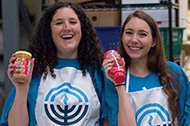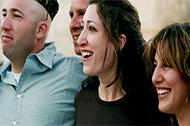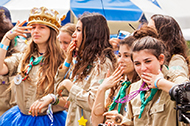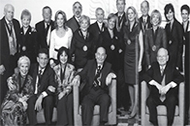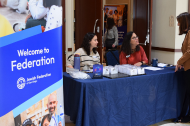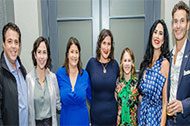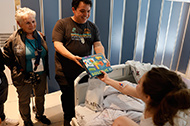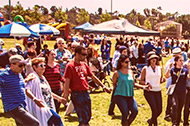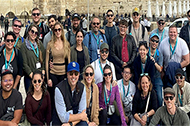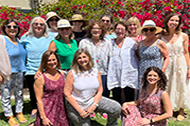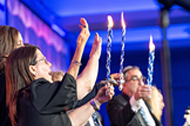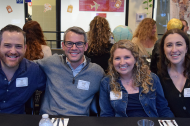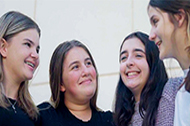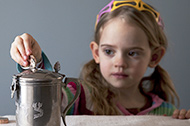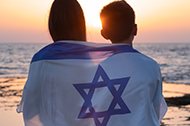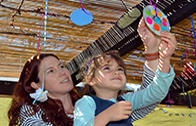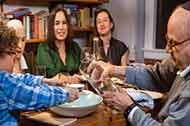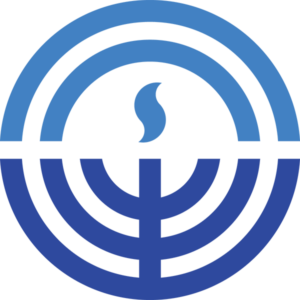Bearing Witness in Poland: Honoring the Past, Looking to the Future
05/16/2025

By Sonia Israel
This spring, Jewish Federation of San Diego led a delegation of 44 community members to Poland to participate in the International March of the Living, commemorating the 80th anniversary of the liberation of the concentration camps and the end of the Shoah. The march brought together a diverse array of participants, including children of Holocaust survivors, non-Jewish allies, and community leaders.
The following reflection from Mission Co-Chair Sonia Israel honors those we lost, celebrates those who endured, and reminds us of the strength we carry forward.
April 24, 2025 – The Day of the March
When we arrived at Auschwitz and stepped off the bus, the sun was shining despite the forecast of rain. We quickly ate our box lunches (eating on Auschwitz grounds is generally frowned upon), then lined up and walked toward our staging area.
Imagine organizing 7,000 people. Each group had a designated spot, and large screens and speakers were set up so we could follow instructions and hear the opening remarks.
Our group gathered in front of the barracks. It was a moment to capture memories with pictures of Federation board members, committee members, and synagogue groups. We stood proudly, wanting to share our presence with the world. Even among 7,000 people, we ran into familiar faces from San Diego, across the country, and around the world.
Beginning the March
After about an hour, the speakers came to life, and we learned that 80 Holocaust survivors were marching with us. Their stories played on the screens, and we stood in silence, absorbing their testimonies.
Then it was time.
To the sound of a shofar, the survivors, followed by the Presidents of Poland and Israel, began leading the March. Each group paused beneath the infamous gate with the words Arbeit Macht Frei— “Work Sets You Free”—for a group photo.

(As an aside: this gate’s inscription was crafted by prisoners in the camp’s metalwork detail. They intentionally reversed the letter “B” as a hidden act of rebellion.)
After our photo, we began our march, each of us walking at our own pace. My children walked beside me, sometimes holding hands, sometimes just side by side.
The distance from Auschwitz to Birkenau is only 3 kilometers (about 1.8 miles), but every step felt heavy with meaning. As we walked past trees, homes, and farms, I imagined making this journey barefoot or in ill-fitting wooden clogs, cold, hungry, and weak. Along the way, we were greeted by Polish supporters clapping for us; the original marchers were met by SS officers with guns.
Remembering at Birkenau

We arrived at Birkenau and stopped by the train tracks leading into the camp. There, we placed small wooden plaques inscribed with the names of family members who perished or survived the Shoah. Others wrote messages of hope and resilience, or simply the words we repeat again and again: Never Again.
Just as we passed through the entrance, the sky opened. It wasn’t just rain—it was lightning, thunder, and a heavy downpour. The sky seemed to sob with us.
Carrying Strength Through Song
Among the 80 survivors present were six hostages who had been kidnapped on October 7 and later released from Gaza.
One of the most powerful moments came when Agam Berger, one of the released hostages, played the theme from Schindler’s List on a 150-year-old violin. She was accompanied on guitar by Daniel Weiss, a survivor from Kibbutz Be’eri.
Later, IDF cantor Shai Abramson and survivor Sarah Weinstein sang Ofyn Pripetshik—a Yiddish song my mother used to sing. I joined in, tears streaming down my face.
The program ended with all of us singing Hatikvah, Israel’s national anthem.
Then came the long, wet walk back to the bus. We waded through puddles, our shoes, socks, and clothes soaked. We were cold and tired. And still, it was nothing compared to what our Jewish brothers and sisters experienced during their death marches.
We got to walk out. Alive.
Four Days Later: A Testament to Life

On Sunday, we traveled to Treblinka. Along the way, we stopped in Tykocin, a former shtetl where 2,000 Jews—the entire population—were rounded up in 1941, taken to a nearby forest, and murdered in mass graves.
We visited the old synagogue, built in 1643, which now serves as a museum. The walls were covered in beautifully preserved artwork and prayers. But what moved me most was seeing a group of high school students singing and dancing with such ruach (spirit). Naturally, we joined them.
Then, two elderly survivors stepped into the circle and began dancing slowly and gracefully.
L’dor v’dor—from generation to generation. They had survived and these young people were their future.
The Nazis murdered six million Jews. But we survived. We thrived. We won through memory, legacy, and every generation yet to come.
